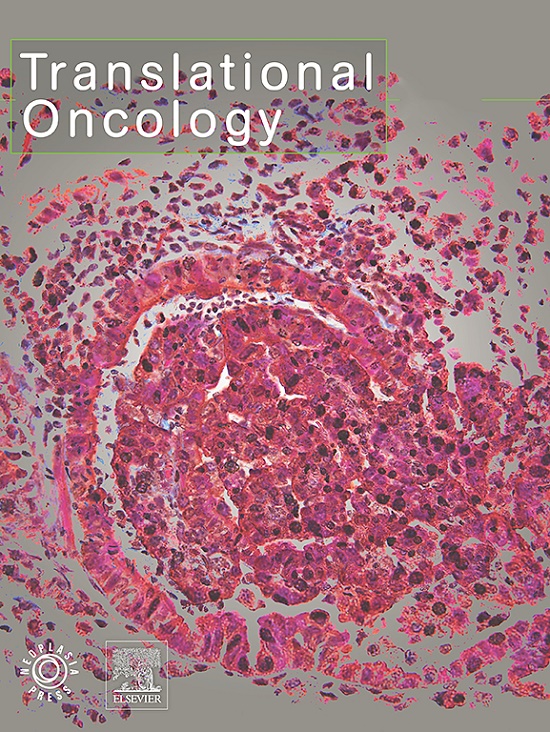Near-infrared photoimmunotherapy for osteosarcoma targeting epidermal growth factor receptor
IF 5
2区 医学
Q2 Medicine
引用次数: 0
Abstract
Osteosarcoma is the most common bone tumor, and it possesses high metastatic propensity. Although systemic chemotherapy has improved its prognosis, improvements in survival rates have stalled in recent years. Moreover, the prognosis of patients with metastatic osteosarcoma remains poor. Near-infrared photoimmunotherapy (NIR-PIT) is a highly selective cancer therapy that induces immunogenic cell death (ICD), and the therapeutic effects spread to distant metastatic sites. Therefore, NIR-PIT could be useful in both primary and metastatic osteosarcoma treatment. In this study, we investigated the efficacy of NIR-PIT targeting epidermal growth factor receptor (EGFR) in osteosarcoma. The cytotoxic effects of NIR-PIT in osteosarcoma cell lines with different EGFR expression levels (MG63; high, Saos-2; low) were evaluated. NIR-PIT–induced cell death was dependent on the EGFR expression level. After NIR-PIT, swelling and bleb formation, the characteristic morphological changes induced by NIR-PIT associated with necrosis caused by the influx of extracellular fluid, were observed. In addition, the release of the ICD markers lactate dehydrogenase and ATP was detected after NIT-PIT. NIR-PIT significantly suppressed tumor growth in tumor-bearing mice. This study revealed that NIR-PIT targeting EGFR has therapeutic effects and induces ICD in osteosarcoma; thus, it is potentially a novel therapeutic strategy for primary and metastatic osteosarcoma.
针对表皮生长因子受体的骨肉瘤近红外光免疫疗法
骨肉瘤是最常见的骨肿瘤,具有高度转移倾向。虽然全身化疗改善了骨肉瘤的预后,但近年来其生存率的改善却停滞不前。此外,转移性骨肉瘤患者的预后仍然很差。近红外光免疫疗法(NIR-PIT)是一种高度选择性的癌症疗法,可诱导免疫性细胞死亡(ICD),治疗效果可扩散到远处的转移部位。因此,NIR-PIT 可用于原发性和转移性骨肉瘤的治疗。在这项研究中,我们探讨了以表皮生长因子受体(EGFR)为靶点的近红外-PIT在骨肉瘤中的疗效。我们评估了 NIR-PIT 在不同表皮生长因子受体表达水平(MG63;高;Saos-2;低)的骨肉瘤细胞系中的细胞毒性作用。NIR-PIT 诱导的细胞死亡取决于表皮生长因子受体的表达水平。近红外-PIT诱导细胞死亡与表皮生长因子受体表达水平有关。近红外-PIT诱导细胞死亡后,可观察到肿胀和出血点的形成,这是近红外-PIT诱导细胞死亡的特征性形态变化,与细胞外液流入导致细胞坏死有关。此外,NIT-PIT 还能检测到 ICD 标志物乳酸脱氢酶和 ATP 的释放。NIR-PIT 能明显抑制肿瘤小鼠的肿瘤生长。这项研究揭示了以表皮生长因子受体为靶点的 NIR-PIT 对骨肉瘤具有治疗作用,并能诱导 ICD,因此它有可能成为治疗原发性和转移性骨肉瘤的一种新型治疗策略。
本文章由计算机程序翻译,如有差异,请以英文原文为准。
求助全文
约1分钟内获得全文
求助全文
来源期刊

Translational Oncology
ONCOLOGY-
CiteScore
8.40
自引率
2.00%
发文量
314
审稿时长
54 days
期刊介绍:
Translational Oncology publishes the results of novel research investigations which bridge the laboratory and clinical settings including risk assessment, cellular and molecular characterization, prevention, detection, diagnosis and treatment of human cancers with the overall goal of improving the clinical care of oncology patients. Translational Oncology will publish laboratory studies of novel therapeutic interventions as well as clinical trials which evaluate new treatment paradigms for cancer. Peer reviewed manuscript types include Original Reports, Reviews and Editorials.
 求助内容:
求助内容: 应助结果提醒方式:
应助结果提醒方式:


